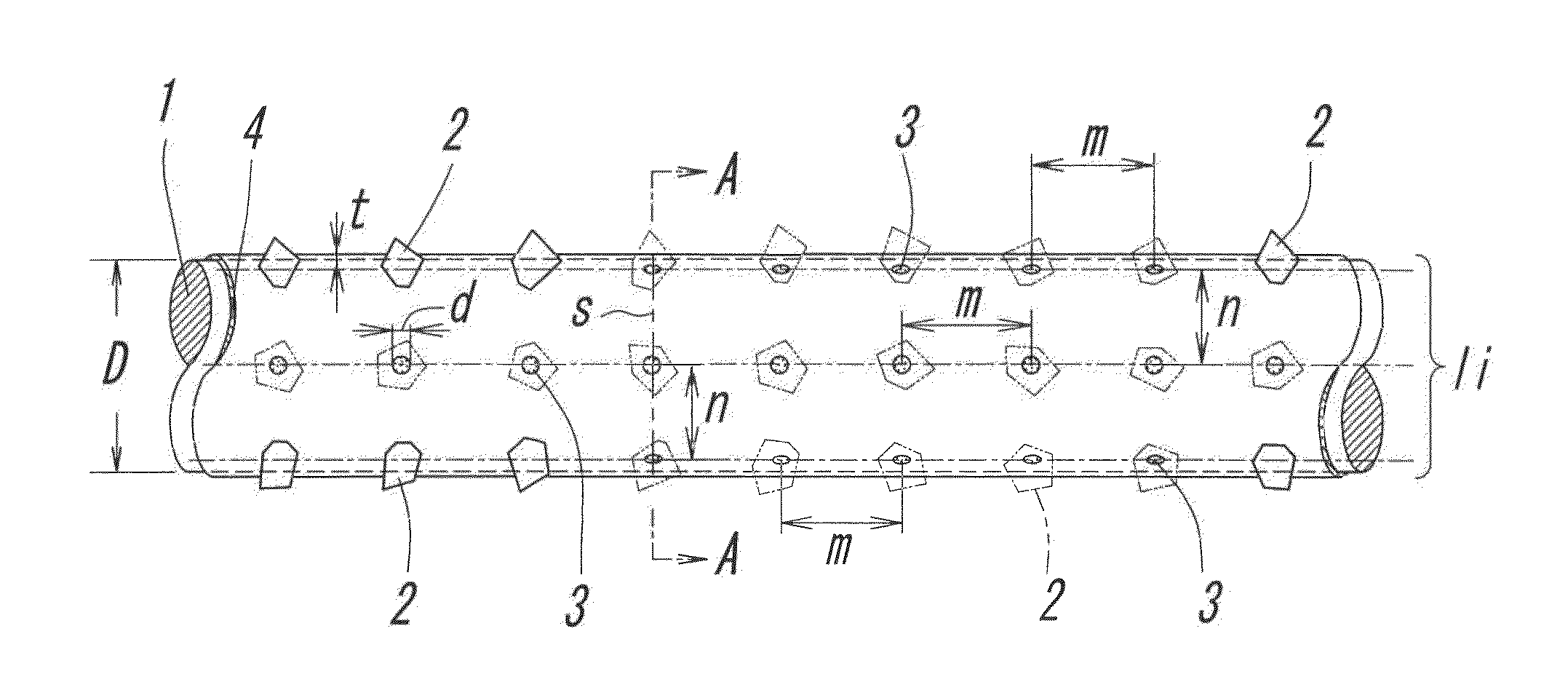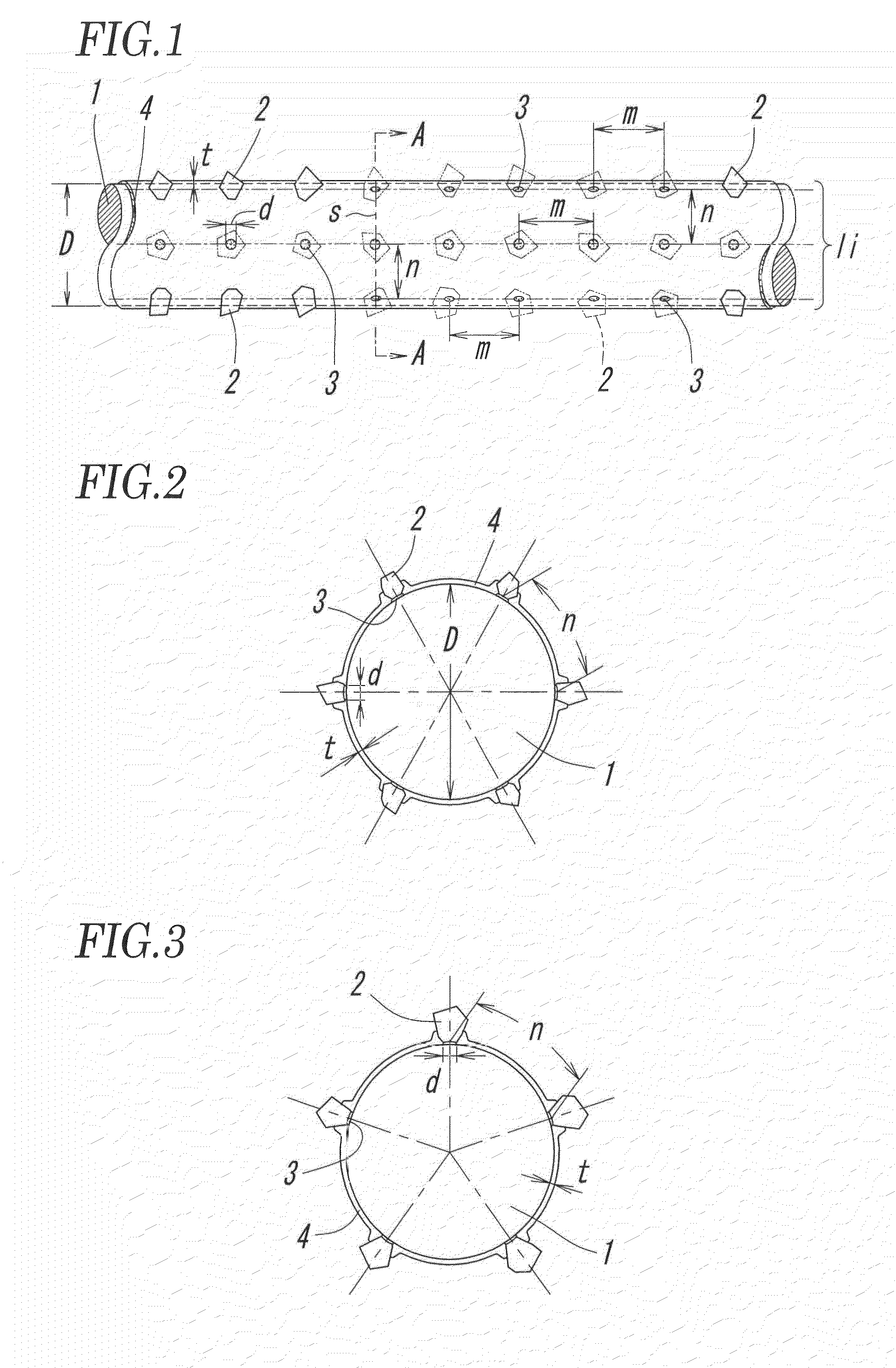Fixed abrasive grain wire saw, its manufacturing method, and method of cutting workpiece by using it
a technology of fixed abrasive grains and wire saws, which is applied in the direction of metal sawing apparatus, grinding devices, manufacturing tools, etc., can solve the problems of reducing affecting the grinding efficiency of individual abrasive grains, so as to suppress the formation of an abrasive grain group, improve grinding efficiency, and suppress the tight contact of abrasive grains
- Summary
- Abstract
- Description
- Claims
- Application Information
AI Technical Summary
Benefits of technology
Problems solved by technology
Method used
Image
Examples
example
[0074]A fixed abrasive grain wire saw was manufactured by using a core wire formed with a piano wire having a diameter of 160 μm and abrasive grains having an average abrasive grain diameter of 30.4 μm. A solution of 15% acrylic rubber and 85% normal hexane was used as an adhesive to be supplied to the adhesive transfer roller and an aqueous solution, which was prepared to a pH of 4.0 with 500 grams of nickel sulfamate per little, 10 grams of nickel dichloride per little, and 20 grams of boric acid per little, was used as the plating liquid in the electrolytic plating bath 11 to permanently fasten the abrasive grains by nickel plating at a liquid temperature of 50° C. and with a current density of 15 A / dm2. The nickel film thickness was set to 10 μm, which is about 30% of the average abrasive grain diameter. The resulting fixed abrasive grain wire saw had substantially equal abrasive grain heights, and its average wire diameter was 239 μm. The whole length of the fixed abrasive grai...
PUM
| Property | Measurement | Unit |
|---|---|---|
| diameter | aaaaa | aaaaa |
| diameter | aaaaa | aaaaa |
| diameter | aaaaa | aaaaa |
Abstract
Description
Claims
Application Information
 Login to View More
Login to View More - R&D
- Intellectual Property
- Life Sciences
- Materials
- Tech Scout
- Unparalleled Data Quality
- Higher Quality Content
- 60% Fewer Hallucinations
Browse by: Latest US Patents, China's latest patents, Technical Efficacy Thesaurus, Application Domain, Technology Topic, Popular Technical Reports.
© 2025 PatSnap. All rights reserved.Legal|Privacy policy|Modern Slavery Act Transparency Statement|Sitemap|About US| Contact US: help@patsnap.com



